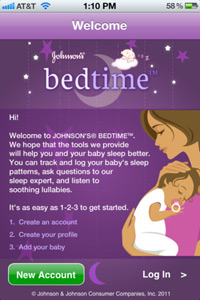
It’s no
surprise to any marketer these days that the best targets for its mobile efforts are the young and affluent. But what is surprising, says Melissa Parrish -- analyst at Forrester and lead
author on its latest “Marketing Strategies for the Mobile Mindshift” -- is just how true that is, with such disparate marketers as Johnson & Johnson, Mercedes Benz and Krispy Kreme
riding the wave.
“When you look at the data as a whole,” she tells Marketing Daily, “it is just remarkable. There is a correlation between the people who are the
most sophisticated being younger. And you’d expect that, since younger people are connected all the time. But it’s not just that they are desirable because of their technology behavior.
They’re also more educated and make more money. They’re just more desirable customers all around.”
advertisement
advertisement
Forrester reports that 22% of American online adults are
actually furthest along in this mobile shift, connecting frequently and on multiple devices. Calling this elite group “Adapters, Immersers, and Perpetuals,” Forrester finds that on
average, they are 34 and earning more $95,000 per year. They are likely to use dozens of apps daily, and are driven by convenience and impatience. They are also more open, with 43% willing to exchange
personal information if they feel they are being rewarded with something of value (compared with just 23% of adults overall.)
While CPG companies are in many ways the least likely
to connect with this elite audience, one of her favorite examples of innovation is Johnson & Johnson, which she says is using mobile to create new definitions of value for consumer. While plenty
of parents use J&J products, she says, the company used its created Bedtime app to offer something more important: Sleep. The app includes access to sleep experts, tools to help them learn their
babies’ sleep habits, and a “mommy forum,” she writes, as well as lullabies and ambient soothing sounds.
Among luxury brands, she is also impressed by
Mercedes-Benz USA’s mbrace, “a suite of apps and services that enfolds its customers’ multichannel lives in convenience and security, whether they want to send directions to their
car’s computer or have a real-life concierge book their next flight.” And she’s a fan of the way Krispy Kreme’s hot-button app fulfills a need consumers didn’t know they
had.
For marketers, it has become increasingly important to understand when, how and why their customers want to interact with them. “For brands that don’t make changes
now, they will be chasing the mobile mind shift as it affects greater portions of the population," she writes. "Not only will current profits fall, but the brands’ ability to be profitable in
the future will decrease, as the only customers to whom they will still be relevant will be in the oldest demographic."
But it’s not without risk. While initial forays into
mobile appeal may cost marketers, let’s say, $500,000, “once it’s been tested and seems successful and it’s time to involve the IT department and move toward the 2.0 version,
we’re talking about millions. And that that investment won’t make sense for every brand.”